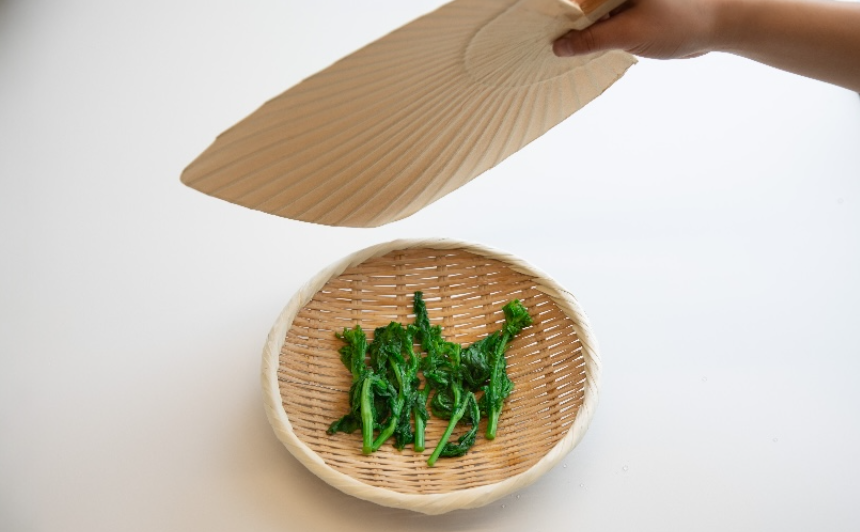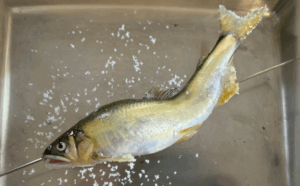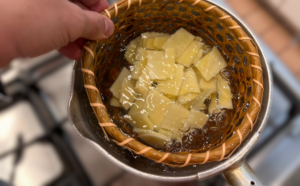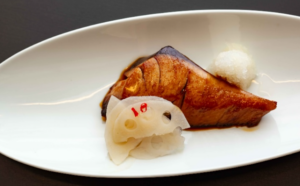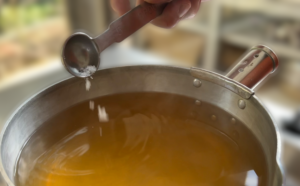Kiage is a cooking technique where you cool boiled vegetables and other ingredients in a strainer without placing them in water. For green vegetables, it’s better to cool them in water right after boiling. This step helps keep their natural vibrant color. But when you can’t remove extra moisture after soaking, or need to keep water absorption to a minimum, kiage is the way to go. It works especially well for ingredients used in “aemono” (dressed dishes). By skipping the water soak, the ingredients don’t soak up extra moisture, allowing the dressing or seasoning to soak in better. This way, you can whip up a delicious dish that is not watered down.
How to Do Kiage: Once you are done with boiling the ingredients in water, put them in a strainer to help cool them off. You can also fan them to keep their great color.
The photo shows “nanohana” (rapeseed blossoms) being cooled using the kiage method after boiling.

